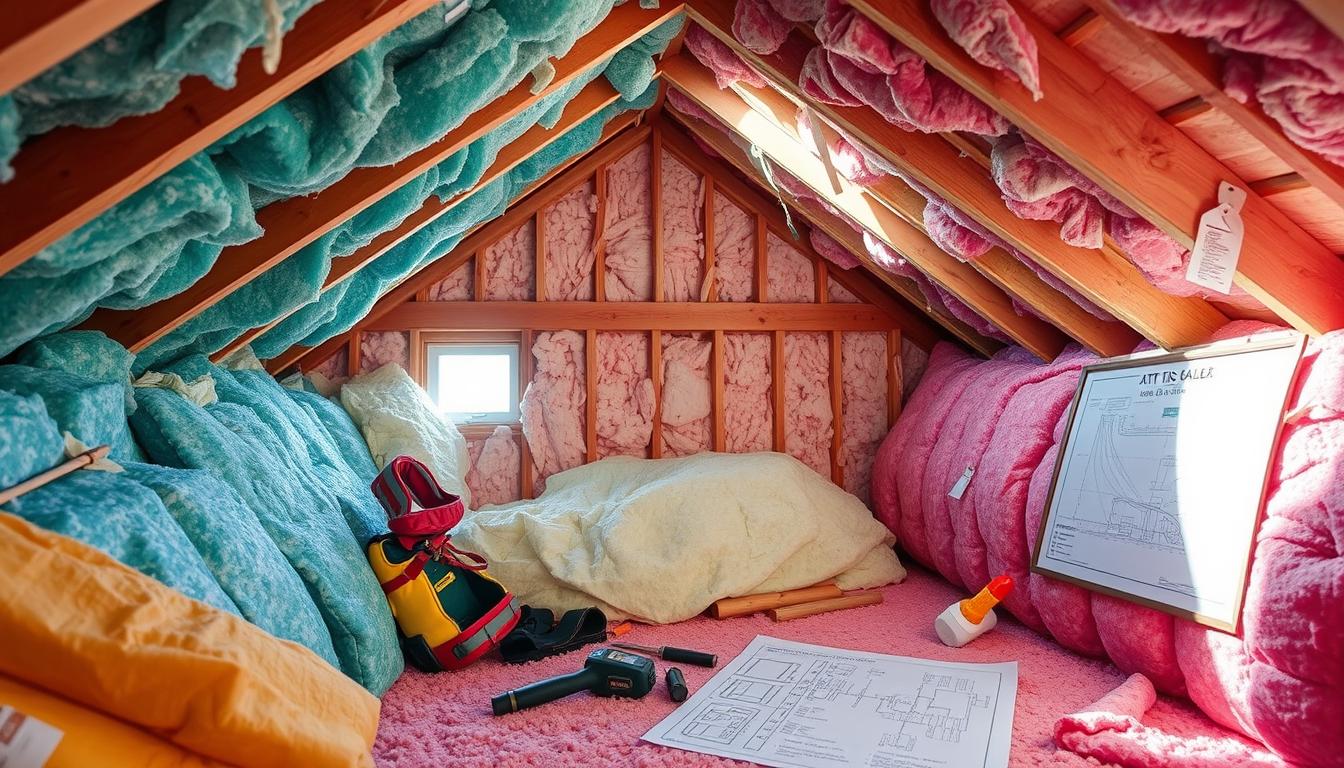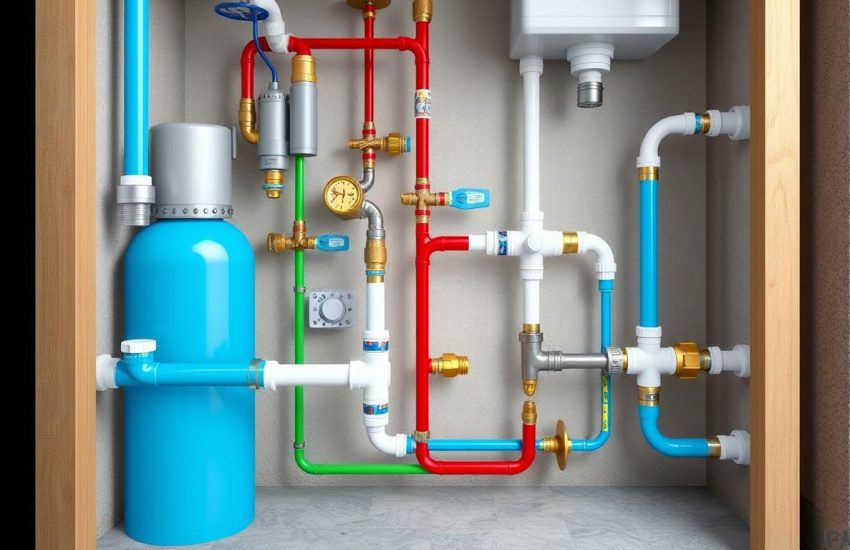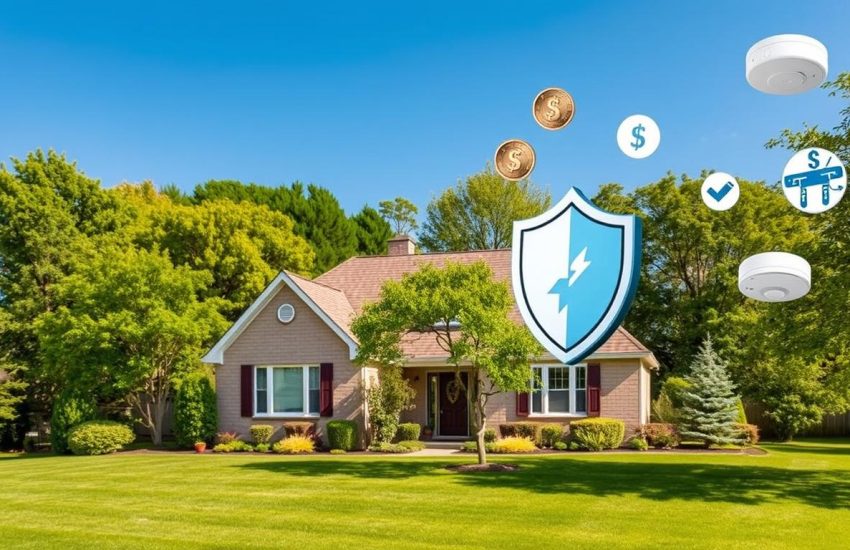Attic Insulation: A Complete Guide for Homeowners
Did you know that a huge 90% of U.S. homes are under-insulated? This key home improvement boosts energy efficiency and home value. Attic insulation helps keep your home comfy, cutting utility bills by up to 45%. But how do you know if your home needs it? And what steps can you take?
It’s surprising to find out insulation is a top home upgrade. Homeowners often get back 116% of the cost spent on attic insulation. Besides slowing down heat flow, it also protects your roof, improves HVAC efficiency, and fights moisture and pests. For a smooth-running system, consider an HVAC check during quieter seasons. Count on expert advice on HVAC inspections.
Knowing about R-value, which shows how well insulation blocks heat flow, is crucial. It can boost your home’s R-value, comfort, and may qualify for rebates. This guide walks you through attic insulation options. It covers materials such as fiberglass, spray foam, and cellulose. It also considers your climate zone, as per IECC standards.
Key Takeaways
- Under-insulation leads to wasted energy and high costs.
- Good insulation can save homeowners up to 45% on bills.
- Attic insulation improves energy efficiency and increases home value.
- The right insulation can raise R-value, making homes more energy-efficient.
- Proper attic insulation brings an average 116% return on investment.
- IECC provides guidance on insulation R-values by climate zone.
- Older homes often need more insulation to meet new standards.
Why Focus on Attic Insulation?
Attic insulation does more than save energy; it protects your home from losing energy. It makes sure your home stays comfortable. The attic is key due to heat rising. This can cause big energy losses if not handled well.
Attic insulation creates a strong thermal boundary. This helps control your home’s temperature all year. It keeps the heat in during winter and out during summer. This makes your entire home more comfortable.
Adding air sealing with insulation is a great move. Seal up gaps before insulating for the best results. This makes your home more efficient and comfy. It also stops dust and allergens from getting inside.
Below is a table showing how insulation and air sealing help save energy:
| Feature | Impact on Energy Efficiency | Additional Benefits |
|---|---|---|
| Attic Insulation Alone | Moderate improvement | Temperature control, moisture regulation |
| Attic Air Sealing Alone | Significant improvement | Reduces air leakage, enhances indoor air quality |
| Combined Insulation and Air Sealing | Maximum improvement | Optimal energy savings, improved comfort, sustainable indoor climate |
Together, air sealing and insulation are very effective. They save energy and make homes more comfortable. This means lower bills and a nicer home all year.
Rockweiler Insulation is a leader in making homes energy smart in southern Wisconsin. They show how proper attic work can really help.
DIY vs Professional Help
Choosing between DIY attic insulation and professional insulation upgrade is big. This choice impacts how well the insulation works and your savings over time.
DIY attic insulation looks good because it saves money upfront. Many think of it as a weekend task. For those who are handy and have easy attic access, it might seem like a good idea. But, lacking the right know-how can lead to big problems. Issues like moisture problems or not enough air flow can lower insulation’s effectiveness. This affects your home’s comfort.
Choosing a professional insulation upgrade means getting expert help and the best materials. While it costs more at first, the perks include better work, better materials, and a plan that fits your house. Professionals handle everything. They look at moisture control, air sealing, and pick the right insulation for you.
Here is a detailed comparison to help you decide:
| Aspect | DIY Insulation | Professional Insulation |
|---|---|---|
| Cost of Materials | $500 – $800 | $2,500 – $4,500 |
| Labor Cost | $0 (self-performed) | $1,000 – $2,000 |
| Project Duration | 1-2 days | 1-2 days (Efficient) |
| Potential Risks | Improper installation, insufficient handling of moisture issues | Higher cost but professionally managed risks |
| Long-term Benefits | Variable, dependent on installation quality | Increased energy savings, property value, and comfort |
For more advice on DIY vs professional attic insulation, check out this guide. It offers insights into both options, helping you choose what’s best for you.
Deciding between DIY or a professional comes down to many things. Consider not just the immediate costs but also how it will affect your home’s energy use, safety, and handling any moisture problems.
How to Save Money
Putting cost-effective insulation in your attic cuts down your energy bills. It also makes your home more efficient. Learning to choose and use affordable attic insulation can save a lot of money.
Starting out, you pick the best insulation type. You don’t need to match what’s already there. For example, laying unfaced fiberglass rolls over old loose fill works well. This method is cheaper than removing old insulation and adds a new layer to save energy.
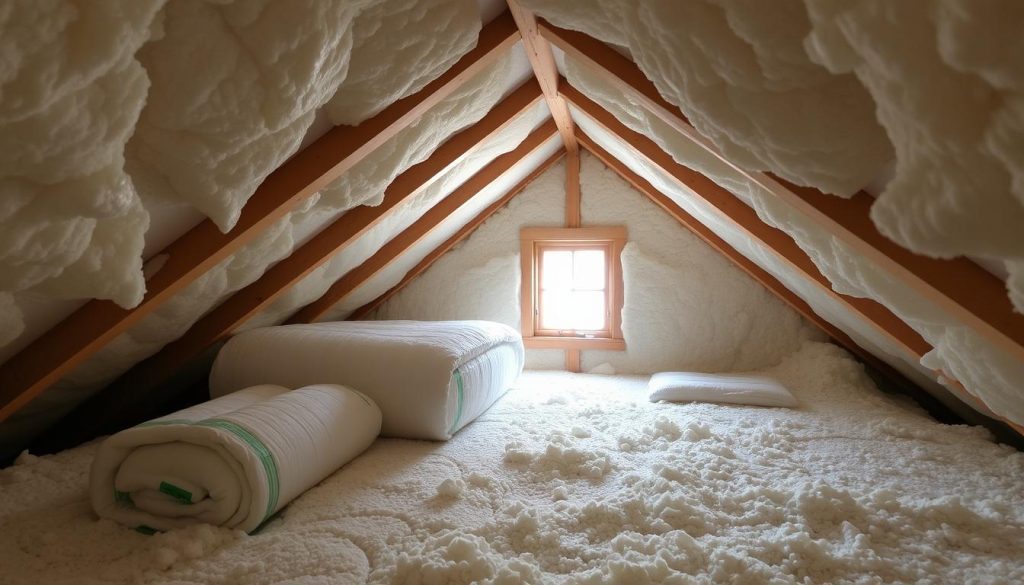
Pay close attention to how you install it, especially near lights and vents. Keep insulation away from certain lights unless they’re safe for contact. This prevents fire risks and ensures safety.
Loose fill insulation might cost more at first. But it quickly pays off by lowering your bills. Improving insulation can cut your home’s energy use by over 20%. This means big savings each year.
| Insulation Type | Initial Cost Savings (%) | Annual Energy Bill Savings | R-Value Range |
|---|---|---|---|
| Unfaced Fiberglass Rolls | N/A | $200 | R-30 to R-60 |
| Loose Fill | 10-15% | $200-$300 | R-30 to R-60 |
| Fiberglass Batts | N/A | $150-$250 | R-25 to R-49 |
Better attic insulation saves money and boosts your home’s value. This matches tips from the US Department of Energy and Energy Star. So, getting the right insulation lowers energy bills. It also leads to a sustainable, cost-saving home.
Step-by-Step Upgrades
Starting to upgrade attic insulation means thinking hard and planning well. You want your home to be more energy-efficient and comfy. First, look at your attic’s insulation and its R-value. Your area’s weather will tell if you need R-38 to R-49, says Energy Star.
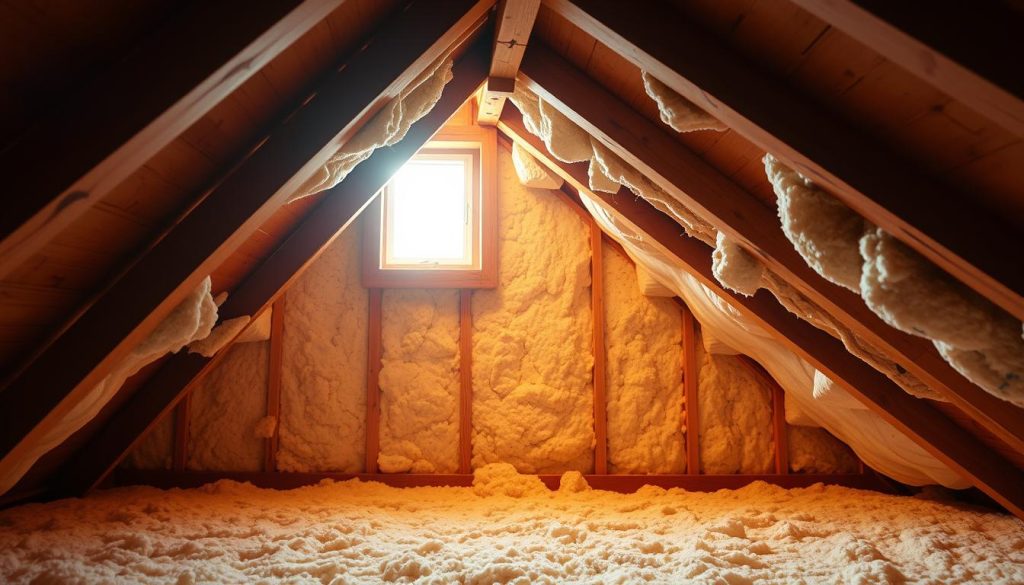
If you pick fiberglass batts for insulation installation, lay them out with no gaps. Doing it right stops heat from escaping and makes your home warmer. Using cellulose, which might have recycled things in it, suits attics with weird shapes or lots of blocks. It’s a good choice for those who care about the planet.
- Fiberglass batts: Put them across the joists to fully cover them, avoiding heat leaks. It’s important to cut it well to fit tight between joists.
- Loose fill insulation: Great for odd attic layouts because it fills up spaces well, making it more efficient.
Also, make sure insulation installation doesn’t block vent holes. Baffles help keep air moving, which stops damp buildup and keeps insulation working long. Sealing cracks with caulk and weatherstripping helps too. It makes your attic work better.
| Material | Key Benefit | R-Value |
|---|---|---|
| Fiberglass batt | Easy to install, keeps noise down | Approx. R-3.2 per inch |
| Cellulose | Good for the earth, fits in weird spaces | Approx. R-3.7 per inch |
| Spray Foam | Seals air leaks well, very effective | Higher R-value per inch |
When choosing to upgrade attic insulation to batts or loose fill, do it carefully. More than just adding stuff, it’s about right placement. This way, your home becomes better at saving energy.
Final Tips for Success
Making sure your home has good attic insulation is key to an energy-efficient home. It’s not just about picking the best material. It also involves understanding how to keep your home comfortable and cost-friendly. Adding the right ventilation helps stop moisture damage. This keeps your insulation working well. It’s also smart to know the R-value that matches your area. This helps keep your home warm or cool while saving on energy costs.
There are many types of insulation materials to choose from. Some materials, like cellulose, are great for cold places and old houses. Others, like spray foam, stop air leaks. Knowing what fits your location is important. The Department of Energy has guides to help you. For cold areas, you might need an R-value of R-49 or more. This could mean using thick fiberglass or spray foam. For warm places, reflecting barriers and an R-value around R-30 are good to keep it comfortable.
Think about the long-term benefits compared to the upfront costs. DIY fans might like using fiberglass batts because they are budget-friendly. They are good for places with moderate weather. But, the money you save on bills should balance out the need for correct installation. A DIY mistake could end up costing more. Getting a pro to check your home might offer the best value. They can suggest the best insulation for your home. This choice can make your home more comfy. It also saves money and helps the planet in the long run.

